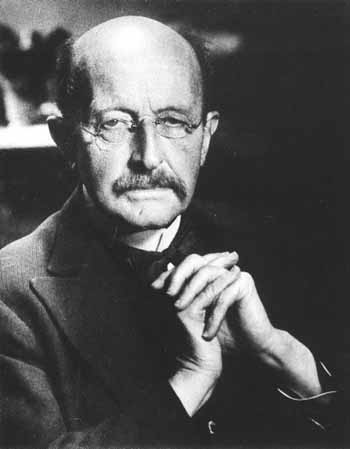
Max Planck (1858 – 1947) was a German physicist whose revolutionary research led to the foundation quantum mechanics and quantum theory. Quantum theory was an entirely new type of physics that replaced classic physics on the atomic scale.
Max Planck was born in Kiel, Germany in 1858. As a youth his family moved to Munich where he enrolled in the Maximilian Gymnasium school where he was introduced to mathematics, astronomy, and mechanics. He graduated at the age of 17 and made the decision to pursue a career in physics. He promptly enrolled in the University of Munich but after a year he transferred to Friedrich Wilhelms University, where he attended lectures by two of Germany’s most eminent physicists – Hermann von Helmholtz and Gustav Kirchhoff. He was intrigued by the concept of thermodynamics and began to read over papers written by Rudolf Clausius, one of the pioneers of thermodynamics. Planck graduated and began teaching physics, first at the University of Munich, then at the University of Kiel, and finally at Friedrich Wilhelms University in Berlin, where he became a full professor in 1892. It was in this position where he conducted some of his most important research.
In 1894 Planck turned his attention to the problem of black-body radiation. In 1859 Kirchoff had identified a black-body as a perfect absorber and emitter of radiation at all wavelengths. Physicists could create a black-body curve by displaying how much radiant energy is emitted at different frequencies for a given temperature of the black-body. Classical theory was having difficulty in having their predictions match up with the observations. In order to solve this problem, Planck made a radical proposal. He proposed that energy could only be emitted in certain, discrete amounts called quanta, whereas classical theory allowed for all possible values of energy. He was able to derive a formula that accurately predicted the energy radiated by a black body – E=hv, where h is Planck’s constant and v is the frequency of radiation. This was the beginning of quantum mechanics and for this work he won the 1918 Nobel Prize in Physics.
Unlike many German scientists of his day, Planck stayed in Germany his entire life and lived through World War 2. His home in Berlin was destroyed by an Allied air raid where he lost all of his scientific papers. He died shortly after the war ended in 1947. The following year the Kaiser Wilhelm Society was renamed the Max Planck Society in his honor.